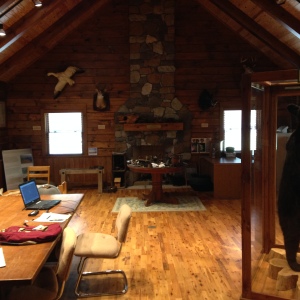This week I resumed digitizing the FOLA archives at the Oakland Nature Preserve. I’m currently up to 1996 – a major year in the history of Lake Apopka. The St Johns River Management District was finally authorized to set phosphorus discharge limits for the lake. This would limit the amount of nutrients allowed to enter the lake, and hopefully slow or halt the process of eutrophication. The Lake Apopka Restoration Act, signed by Governor Lawton Chiles, also finally initiated the process of purchasing the North Shore farms.
Another major event in 1996 was the application by the town of Oakland to the Florida Community Trust, requesting purchase of four parcels of land. These parcels were sought by the Friends of Lake Apopka to preserve and restore a section of Lake Apopka shoreline. This land would help make the restoration efforts more tangible to the community. FOLA looked to the Florida Communities Trust, a program under the State Department of Environmental Protection, for assistance in acquiring the land. The Trust aids local communities in acquiring greenspace and preserving valuable natural resources from development. Using money from the St Johns River Water Management District, and Beltway mitigation funds, the parcels were purchased from developers who had agreed to leave the land undeveloped until the purchase could be made.
Today, the preserve sits on 128 acres: 40 acres of upland pines, and 88 of forested wetlands. When the land was purchased, the upland portion was being used for pulpwood production. The pine plantation was recently cut down, and restoration of the area to a Longleaf Pine and Turkey Oak habitat is ongoing. The wetlands themselves were mostly untouched. Restoration here focuses on removing exotic species, mostly from around the waterline.
Facilities include the Ginn Museum, which holds artifacts from around Lake Apopka and the Friends of Lake Apopka Archives. The museum is patterned after Florida cracker cabins, with raised floors and a wrap-around porch. There’s also an original fishing cabin, taken from one of the fish camps that were so prevalent around the lake before the game fish populations collapsed in the late 40s. Included in the archives is a fantastic collection of portraits of fish camp visitors.
Here’s a photo of my “office”:

So now you have some idea of where I work, what I do, and the beginning of pollution in Lake Apopka.